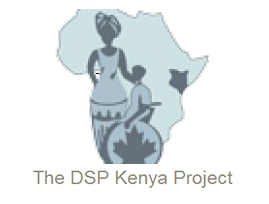1.7 – What roles do rehabilitation providers have related to HIV in SSA?
Table 1.7: Roles of Rehabilitation Providers
| Roles of Rehabilitation Providers | Examples |
|---|---|
Clinical care |
From promotion, to prevention, to referral, to acute care, to rehabilitation, to habilitation and to palliation. E.g., see Section 1.8 for details of clinical roles for rehabilitation. |
Advocacy |
Using one’s knowledge and status in the community to advocate for change in support of the needs of people living with or at risk for HIV. E.g., advocating for inclusion of rehabilitation in HIV National Strategic Plans, advocating for HIV physicians to refer to rehabilitation, advocating for people living with HIV who are marginalized to receive equitable care, advocating for food security and feeding schemes. |
Capacity-building |
Providing training to others to enhance the inclusion and participation of people living with HIV in their communities. E.g., education to teachers about how to ensure inclusion of children living with HIV in their classrooms, education to employers about how to support employees living with HIV, education to parents or other family members about appropriate HIV precautions and how to combat HIV-related stigma, education of spiritual leaders and traditional healers about the importance of individuals living with HIV taking ARV |
Research |
Many rehabilitation researchers are leading the way conducting studies to better understand how to address HIV/ART-related disability. E.g., research to develop a tool to assess HIV-related disability,19 research on when and how people with disabilities may be excluded from HIV care and how to address this,20 research on non-pharmacological treatment of peripheral neuropathy or lipodystrophy,21,22 research on rehabilitation with children living with HIV,23 rehabilitation on pain management in HIV,24 research on safe and effective exercise prescription for people living with HIV25, 26 |
19O'Brien KK, Bayoumi AM, Bereket T, Swinton M, Alexander R, King K, Solomon P. Sensibility assessment of the HIV Disability Questionnaire. Disabil Rehabil. 2013 Apr;35(7):566-77. doi: 10.3109/09638288.2012.702848. Epub 2012 Jul 21. PubMed PMID: 22816434. http://www.ncbi.nlm.nih.gov/pubmed/22816434.
20Nixon SA, Cameron C, Hanass-Hancock J, Simwaba P, Solomon P, Bond V, Menon JA, Richardson E, Stevens M, Zack E. Perceptions of HIV-related health services in Zambia for people with disabilities who are HIV-positive. Journal of the International AIDS Society. 2014;17:18806.
21Mutimura E, Crowther NJ, Cade TW, Yarasheski KE, Stewart A. Exercise training reduces central adiposity and improves metabolic indices in HAART-treated HIV-positive subjects in Rwanda: a randomized controlled trial. AIDS Res Hum Retroviruses. 2008a Jan;24(1):15-23. PubMed PMID: 18275343 http://www.ncbi.nlm.nih.gov/pubmed/18275343.
22Mutimura E, Stewart A, Crowther NJ, Yarasheski KE, Cade WT. The effects of exercise training on quality of life in HAART-treated HIV-positive Rwandan subjects with body fat redistribution. Qual Life Res. 2008b Apr;17(3):377-85. Epub 2008 Mar 5. PubMed PMID: 18320351. http://www.ncbi.nlm.nih.gov/pubmed/18320351.
23Potterton J, Stewart A, Cooper P, Becker P. The effect of a basic home stimulation programme on the development of young children infected with HIV. Dev Med Child Neurol. 2010 Jun;52(6):547-51. doi: 10.1111/j.1469-8749.2009.03534.x. Epub 2009 Nov 28.
24Parker R, Stein DJ, Jelsma J. Pain in people living with HIV/AIDS: a systematic review. J Int AIDS Soc. 2014; 17(1): 18719. Published online Feb 18, 2014. doi: 10.7448/IAS.17.1.18719.
25O'Brien K, Tynan AM, Nixon S, Glazier RH. Effects of progressive resistive exercise in adults living with HIV/AIDS: systematic review and meta-analysis of randomized trials. AIDS Care. 2008b Jul;20(6):631-53. Review. PubMed PMID: 18576165. http://www.ncbi.nlm.nih.gov/pubmed/18576165.
26O'Brien K, Nixon S, Tynan AM, Glazier R. Aerobic exercise interventions for adults living with HIV/AIDS. Cochrane Database Syst Rev. 2010b Aug 4;8:CD001796. Review. PubMed PMID: 20687068.http://www.ncbi.nlm.nih.gov/pubmed/20687068.

 Previous Page
Previous Page




